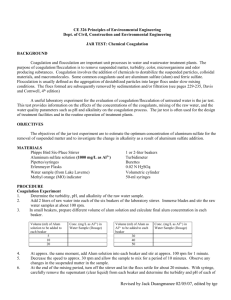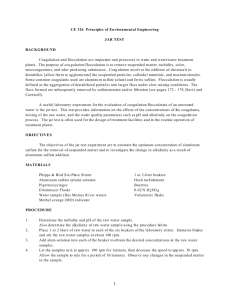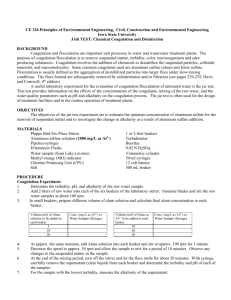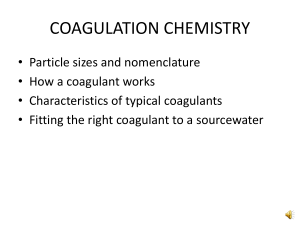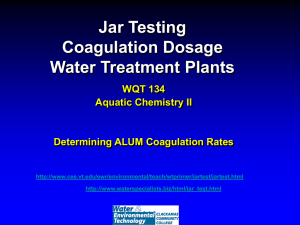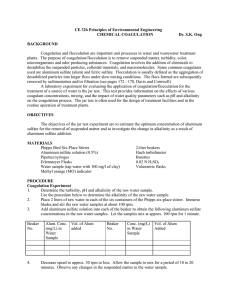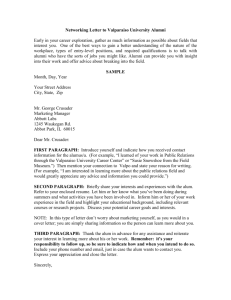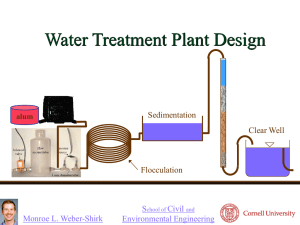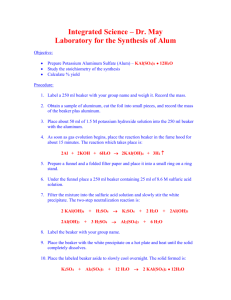Experiment # 7: Jar Test (Coagulation and Flocculation)
advertisement
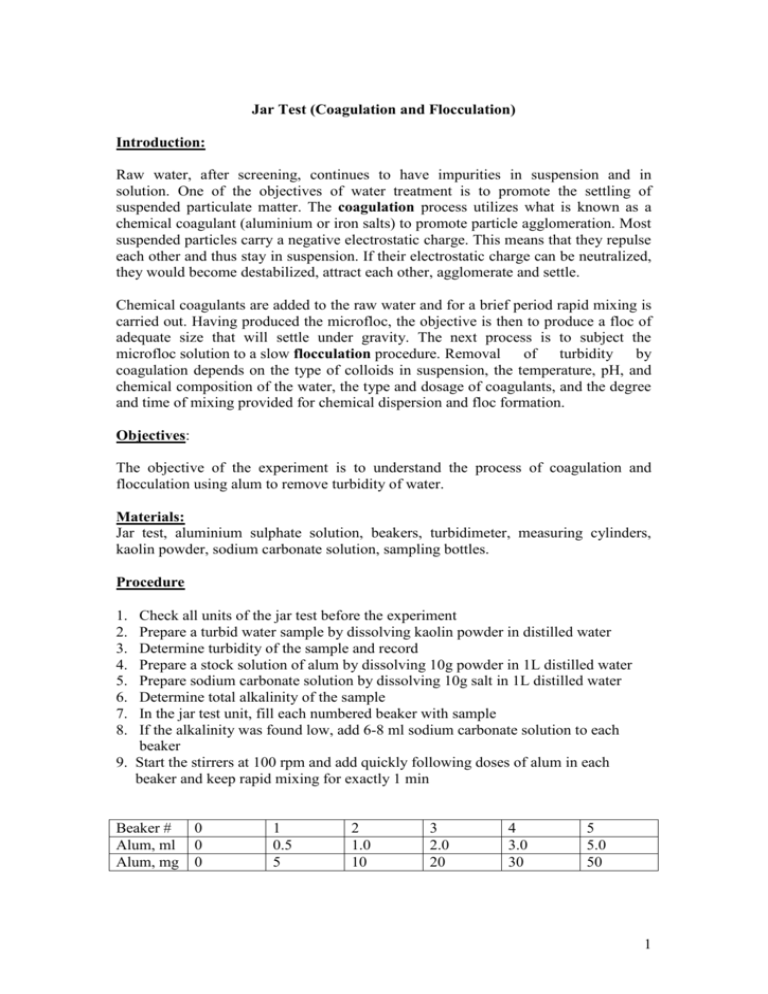
Jar Test (Coagulation and Flocculation) Introduction: Raw water, after screening, continues to have impurities in suspension and in solution. One of the objectives of water treatment is to promote the settling of suspended particulate matter. The coagulation process utilizes what is known as a chemical coagulant (aluminium or iron salts) to promote particle agglomeration. Most suspended particles carry a negative electrostatic charge. This means that they repulse each other and thus stay in suspension. If their electrostatic charge can be neutralized, they would become destabilized, attract each other, agglomerate and settle. Chemical coagulants are added to the raw water and for a brief period rapid mixing is carried out. Having produced the microfloc, the objective is then to produce a floc of adequate size that will settle under gravity. The next process is to subject the microfloc solution to a slow flocculation procedure. Removal of turbidity by coagulation depends on the type of colloids in suspension, the temperature, pH, and chemical composition of the water, the type and dosage of coagulants, and the degree and time of mixing provided for chemical dispersion and floc formation. Objectives: The objective of the experiment is to understand the process of coagulation and flocculation using alum to remove turbidity of water. Materials: Jar test, aluminium sulphate solution, beakers, turbidimeter, measuring cylinders, kaolin powder, sodium carbonate solution, sampling bottles. Procedure 1. 2. 3. 4. 5. 6. 7. 8. Check all units of the jar test before the experiment Prepare a turbid water sample by dissolving kaolin powder in distilled water Determine turbidity of the sample and record Prepare a stock solution of alum by dissolving 10g powder in 1L distilled water Prepare sodium carbonate solution by dissolving 10g salt in 1L distilled water Determine total alkalinity of the sample In the jar test unit, fill each numbered beaker with sample If the alkalinity was found low, add 6-8 ml sodium carbonate solution to each beaker 9. Start the stirrers at 100 rpm and add quickly following doses of alum in each beaker and keep rapid mixing for exactly 1 min Beaker # Alum, ml Alum, mg 0 0 0 1 0.5 5 2 1.0 10 3 2.0 20 4 3.0 30 5 5.0 50 1 10. Reduce the speed of stirrers to 40 rpm and continue for 40 minutes. 12. Stop and raise the paddles above water level and leave the beakers for flocs to settle for 30 minutes. 13. Siphon out clear sample from each beaker without disturbing settled sludge. 14. Find out the turbidity of each sample. Discussion Plot the turbidity values against alum & ferric chloride doses and discuss the results. 2
